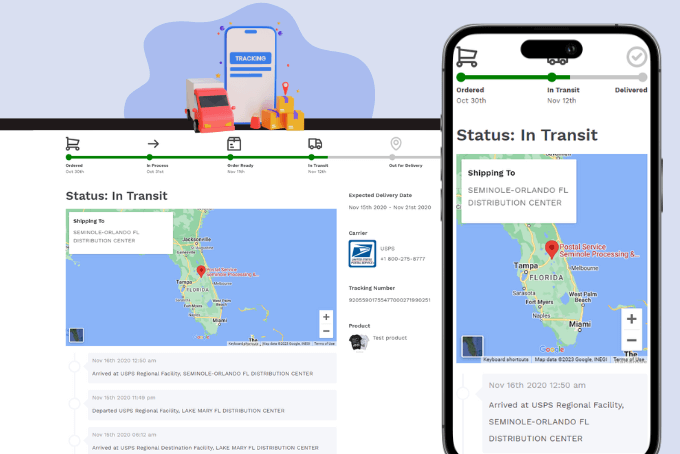
Returns are a costly but inescapable reality for e-commerce stores.
According to the U.S. National Retail Federation, the average return rate remained steady at 16.5% in 2022, which means that about $16.5 cost incurred in returns for every $100 worth of sales. During the peak season, this may be as high as 17.9%.
Such high return rates chip away at your bottom line, with approximately 17% of the purchase price funding the reverse logistics. Given the slim profit margins usual for many e-commerce products, you may lose as much as 3.8% in profit.
However, an effective, smart returns management strategy can make the returns process logistically and economically efficient and turn it into an opportunity to make even more money through upsells and customer retention.
This ultimate returns management guide equips you with strategies to simplify returns to your advantage.
What is Returns Management?
Returns management is an aspect of supply chain management that oversees the entire process of handling returned items. Though returns management is often associated with reverse logistics, the latter properly only refers to the physical process of moving the product backward to the seller.
Holistically, the typical activities of returns management include establishing when and how returns can be made, who bears the shipping costs, what reparations can be offered to the customer, and how the seller deals with the returned goods.
Decisions around returns management are critical as they bear directly on buyer experience, operational efficiency, costs of the process, and, therefore, profitability. Emphasis should be on optimizing the return process, discovering and resolving the causes for returns, and leveraging the opportunity for more business.
The Process: Workflow for Returns Management
Workflow for the returns management process usually involves the following steps:
- The customer initiates the return process
Here, the customer indicates their intention to return the product. Try to discover their reasons for return and the form of reimbursement preferable to them.
- The seller authorizes the return
A liberal return policy is excellent for attracting and retaining customers. However, returns affect your store’s bottom line, and you must keep them under control through strategic gatekeeping and avoidance.
- The goods are delivered back to the seller
Once the return is authorized, the goods are picked up from the buyer and transported to the warehouse and sorting facility. Speed, efficiency, and visibility are critical for managing return costs and customer expectations. Free return shipping is quite popular with buyers but can only be achieved through a highly efficient return process.
- The seller inspects and evaluates the returned goods
The seller inspects the goods to ascertain the extent of damage or use and to establish how much reimbursement to offer. The evaluation also determines how much value can be recaptured from the goods.
- The seller initiates a refund or reimbursement
The seller then initiates an exchange, refund, or some other reimbursement depending on the assessment of the condition of the goods. This is also an opportunity to attempt to push for more business.
- The seller refurbishes, recycles, and resells the goods or disposes of them
Eventually, the seller typically attempts to recapture as much value as possible from the returned goods through repackaging, refurbishing, recycling for restocking, and resale. However, it is occasionally necessary to dispose of the goods.
Getting the returns workflow stages right helps smooth the process and reduce costs.
3 Types of Returns Management Services
Here are the different types of returns management services:
-
In-house returns management
When an e-commerce business handles return management in-house, it is responsible for all aspects of the process. The seller will approve the return, take care of shipment to the premises, inspection, evaluation, value recapture, disposal, and reimbursements. For a small store, this may prove inefficient and costly.
However, with foresight, the seller can optimize the process by working the reverse logistics into the regular delivery, considering peak seasons, and incentivizing in-store returns and exchanges. The seller can also offer returnless refunds while keeping return rates down through gatekeeping and avoidance.
-
3PL returns management
For many e-commerce stores, handling returns in-house makes a costly process even costlier and more inefficient as they lack the necessary structures and skills. However, 3PL returns management can receive returns, inspect quality, recapture value, and even dispose of unsaleable items on your behalf. Outsourcing the process to a 3PL can help relieve the stress on your supply chain department.
The 3PL will help you implement your Return Merchandize Authorization solutions or develop one for you. The 3PL provider will also inspect and evaluate the condition of the items and the packaging. Foodstuffs and items irreparably damaged will be disposed of. Items in new condition are re-inventoried while the rest are assigned a new SKU and sold off at a discount.
-
Drop shipping returns management
Speaking of managing returns, drop shippers have the added disadvantage that they do not hold inventory and, as such, have limited control over the supply chain. As they source from different suppliers, they must account for different suppliers’ return policies in formulating their own, especially regarding shipping costs, return fees, and allowable return windows.
Also, dropshippers should consider tagging products by dropshipping suppliers, accepting returns in a PO box to leverage bulk shipping, and issuing refunds when they accept returns rather than waiting for refunds from suppliers. What’s more, it’s recommended to save costs on return processing by offering returnless refunds.
8 Effective Returns Management Solutions
1. Have a clear return policy
84% of buyers consider a store’s return policy before making a purchase. As such, ensure your return policy wins customers by keeping it clear, transparent, and customer-focused.
Set out the terms comprehensively and clearly in simple language. Indicate clearly the time frames for making returns, the item’s acceptable condition, costs and incidence, and the refund process. Make sure the terms are reasonable by being open to customer feedback.
A clear return policy helps manage the customers’ expectations and simplifies the returns process and customer care.
2. Facilitate returns with self-service
Returns are more involved than ecommerce fulfillment, and dealing with routine return tasks is time-consuming, as well as being inconvenient and costly. A cumbersome return process will also turn away customers and cost you business.
However, 67% of customers prefer to resolve return issues independently before contacting customer care. A well-designed self-service tool will help them initiate returns, guide them through the process, and collect insightful data. Also, you will spend fewer resources on the process, which improves your productivity. The resulting smoothness of the process enhances customer experience, which increases retention and sales.
3. Automate the return process for high efficiency
Returns place undue stress on your organization’s resources, which affects your competitiveness and profitability. Therefore, the goal must always be to streamline the process to make it take up as few resources as possible.
Therefore, automate various aspects of the process, like initiating and approving the return process, generating return labels, issuing refunds, tracking the return and refund process, communicating between the various elements of the process, and collecting data.
It is time to automate returns processing when you feel the return management becomes overwhelming, with many tasks overdue and resources increasingly diverting to it.
Besides minimizing manual work, automation of the returns services increases accuracy and optimizes workflow while reducing costs and improving customer experience.
4. Incentivize exchanges and additional purchases
Returns often lead to refunds, causing a loss of revenue already earned. However, sellers can deal with the loss by encouraging customers to accept an exchange for the returned item. The exchange can be of a variant or different item, a more expensive item, or multiple items. In this way, the seller can incentivize the customer to make additional purchases.
Exchanges and additional purchases let you keep earned revenue and even make more money. They also improve customer loyalty and expose the buyer to the brand more.
Use in-store returns, extended returns window, free shipping offers on exchanges, and various bonuses and discounts to incentivize future purchases.
5. Track reverse shipments
Despite costly returns management, the key to maintaining efficiency, sustainability, and profitability in your business is constantly refining the process. Yet, you cannot improve what you do not measure.
Therefore, it is crucial to track the reverse logistics for insight into the performance of your returns management solutions and to guide the improvement process.
Some of the critical aspects of returns management that you should keep track of include:
- The Return Rate
- Cost of returns and impact on revenue
- Reasons for returns
- Environmental impact of returns
- Return volume
- Return to resale time
6. Keep customers informed of the progress
Just as you do during fulfillment, keep the customer informed on the progress of the returns, particularly refunds and reimbursements. This helps manage the customer’s anxiety and enhances their experience of your brand. Also, you can use the information to expose the customer to other offers that may interest them.
7. Collect data and analyze return reasons
To effectively implement gatekeeping and avoidance strategies in minimizing product returns, you must understand the reasons behind the returns. By knowing the common reasons for returns and anticipating them, many businesses have been able to tweak how they present their products to increase satisfaction.
8. Make returns eco-friendly
Product returns typically have an adverse impact on the environment. Thousands of tons of returned items end up in landfills. Besides, transporting the items back and forth contributes to carbon emissions. For example, apparel items are among the most returned products and the leading contributors to environmental degradation.
Sellers can reduce the environmental impact by using eco-friendly packaging, implementing no-label and no-box returns, and favoring recapturing value over disposal. Where warranted, many sellers now offer green returns and issue refunds without claiming the rejected item back.
5 Best Returns Management Software
Software is at the heart of the facilitation of self-service and automation processes of returns management solutions.
These are the 5 best software to simplify the implementation of your returns management solutions:
1. ParcelPanel Returns and Exchange
ParcelPanel Returns & Exchange is the ultimate Shopify returns management app for simplifying and automating the returns process, preventing fraud, and facilitating exchanges and sales. The software features a self-service returns center, automatic return label generation, real-time notifications, centralized return and refund processing, and data collection & reporting.
Besides, ParcelPanel offers absolute control over the returns process through returns solution customization. It is easy to install and use, with demo and preview features. The self-service return center is now available in 16 languages, and it seamlessly integrates with popular reverse logistics service providers and Shopify apps.
Learn More: Meet the Upgraded ParcelPanel Returns & Exchange App
2. Narvar Returns
As among the best returns management software, Narvar Returns is built to enhance the efficiency and reduce costs of the returns process for Shopify sellers. Through Narvar’s easy-to-use self-service portal, the customer can initiate the return process, receive authorization, and return to any of 200,000+ drop-off locations across the United States.
With Narvar, merchants can also offer flexible exchange options to recapture revenue, provide timely refund notifications for peace of mind, and leverage returns intelligence to make informed decisions.
3. Loop Returns
Loop Returns is the go-to tool for turning returns from a cost center to a profit center. By smartly incorporating the shopping experience within the returns management system, the software incentivizes exchanges through Instant Exchange. It also upsells with Bonus Credit and Shop Now & Shop Later. Loop also streamlines returns with self-service features, proactive notifications, and automated Workflows. With it, you can prevent fraudulent returns with Workflows, Custom Rules, and Block Lists.
Loop also integrates with logistics service providers, ERPs, and many mainstream Shopify apps, including Klaviyo and Gorgias.
4. AfterShip Returns
AfterShip Returns helps you recapture revenue with scalable returns and exchanges through automation. With AfterShip’s customizable rule-based auto-refund and auto-restock, you can minimize manual work. The self-service returns page and automatic email updates can effectively ease customer’s anxiety. With AfterShip Returns, you can also lower return rates by setting a series of return rules, including the return window and non-returnable items.
Moreover, reverse logistics carriers can be easily brought onboard as AfterShip Returns has built integrations with UPS, FedEx, USPS, Canada Post, etc., for efficient management.
5. ReturnGo
ReturnGo is an exchange-first platform that optimizes the ability of your business to recapture revenue from returns for sustainable development. The software automates the process of initiating, approving, and handling returns as well as offering reimbursements. ReturnGo’s self-service portal is intuitive and easy to use. Powered by AI, ReturnGo can find the perfect balance between customer satisfaction and return fraud prevention. Plus, ReturnGo also supports any language, currency, and region.
ReturnGo integrates with major carriers, 3PLs, ERPs, major e-commerce platforms, and a wide range of e-commerce tools.
Final Thoughts
Though unavoidable, returns cause a strain on resources for many businesses. The cost of handling returns and making refunds is usually enough to wipe out profits. Factor in the possibility of fraud and the fact that companies are forced to liberal and costlier return policies just to remain competitive, returns become an existential threat.
Returns management software offers a unique way to streamline and optimize the returns process through automation and improved customer care.
ParcelPanel Returns & Exchange is a free returns management tool for automation, notifications, and revenue recapture. Use it today to make your returns processes efficient!




























